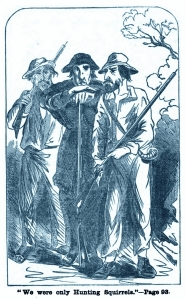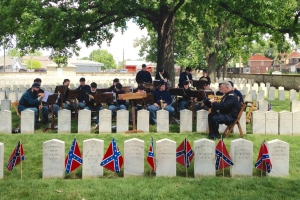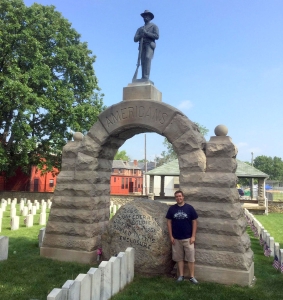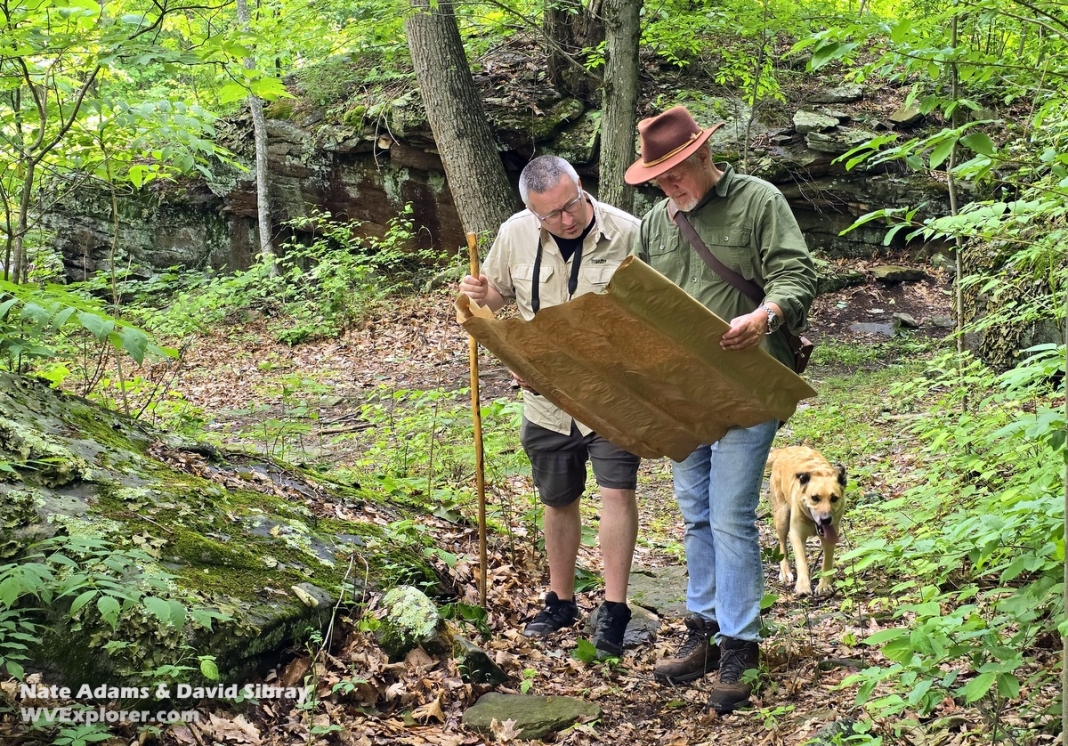CLAY, W.Va. — In 2020, Kentucky fiddler Tyler Childers released his fourth studio album, Long Violent History, a collection of traditional fiddle tunes. Among the selections is his interpretation of an old fiddle tune called “Camp Chase.”
While the title refers to a military training ground and Confederate prisoner-of-war camp in Columbus, Ohio, the composer was a West Virginian—a Clay County fiddler named Solomon “Devil Sol” Carpenter.
When the Civil War broke out, “Devil Sol” allegedly took up the practice of “bushwhacking” as a form of resistance against Union soldiers whom he regarded as occupiers.
Bushwhackers exploited every opportunity to fire at scouts from hiding spots in the laurel thickets that lined the region’s roads. They kept Union forces on their heels, undermined their ability to secure the area, and contributed to a growing suspicion by federal soldiers of nearly every local they encountered.
Union General George Crook, fresh from the Indian wars of the West, and by no means a neutral observer, described the situation in western Virginia in his memoir:

“This country was the home of counterfeiters and cut-throats before the war, and it was the headquarters of the bushwhackers. It was well adapted for their operations, for, with the exception of a small clearing here and there for the cabins of the poor people who inhabited it, it was heavily timbered, with thick underbrush, rocky and broken, with dense laurel thickets here and there...
"It was here that the cowardly bushwhackers would waylay the unsuspecting traveler and shoot him down with impunity. Their suppression became a military necessity, as they caused us to detach much of our active force for escorts, and even then, no one was safe.”
Crook became obsessed with capturing any local he suspected of being a bushwhacker. “I would forward them to Camp Chase for confinement, [but] it was not long before they commenced coming back, fat, saucy, with good clothes, and returned to their old occupations, with renewed vigor. As a matter of course, we were all disgusted at having our hard work set at naught, and have them come back defiantly, as much as to say, “Well, what are you going to do about it?”
Crook’s men soon had a grisly answer to that question. He wrote that, “In a short time, no more of these prisoners were brought in. By this time every bushwhacker in the country was known, and when an officer returned from a scout, he would report that they had caught so-and-so, but in bringing him in, he slipped off a log while crossing a stream and broke his neck, or that he was killed by an accidental discharge of one of the men’s guns, and many like reports. But they never brought back any more prisoners.”
Not all of those western Virginians detained at Camp Chase in the early years of the war were accused of bushwhacking. Some were sent there on simple charges of “disloyal utterances.” And the evidence against some detainees was relatively weak. Some of the early detainees were essentially political prisoners.
“Devil Sol” Carpenter was seized by Union soldiers and shipped off to Camp Chase at least twice, and possibly a third time, during the war years. His first detention was relatively brief. Sent to Camp Chase on March 17, 1862, he was released less than a month later.
A second recorded detention on March 7, 1863, identified him as a “horse thief and bushwhacker.” Carpenter family tradition explains his quick release from one of these detentions as being the result of his fiddling skills.
As Union prison guards came to learn that many of the western Virginians they detained were accomplished fiddlers, they organized a fiddle contest for the prisoners, with the prize being the early release of the winner.
All participants in the fiddle contest would play the same song—a traditional fiddle tune called “George Booker.” Sol managed to secure victory by offering up his own version of the tune, adding a few notes that helped it stand out.
When he returned to western Virginia just a few short weeks after his departure, he shared the story of his release and named his new tune “Camp Chase.”
Was the fiddle contest just a family story, or did it really happen? Given the lax rules at Camp Chase in the first years of the war, it is a thoroughly plausible story. Also, by Devil Sol’s own account, he was not simply released without condition—he was expected to take a loyalty oath to the Union, which he did, and promptly broke as soon as he got home.
A version of Camp Chase recorded by Devil Sol’s grandson French Carpenter can be heard at this link.
Many other detainees at Camp Chase were not so lucky. As the war dragged on, the camp became primarily a detention center for soldiers captured in battle, and conditions grew worse and worse after the suspension of prisoner exchanges.
Overcrowding, unsanitary conditions, inadequate food, and protection from the cold made prisoners more vulnerable to disease outbreaks. Guards shot others as they tried to escape or sometimes for violating camp rules. The bodies of 2,260 are interred at Camp Chase Cemetery at 2900 Sullivant Avenue, four miles west of downtown Columbus.
Sign up to receive a FREE copy of the West Virginia Explorer Magazine newsletter in your weekly email. Sign me up!




